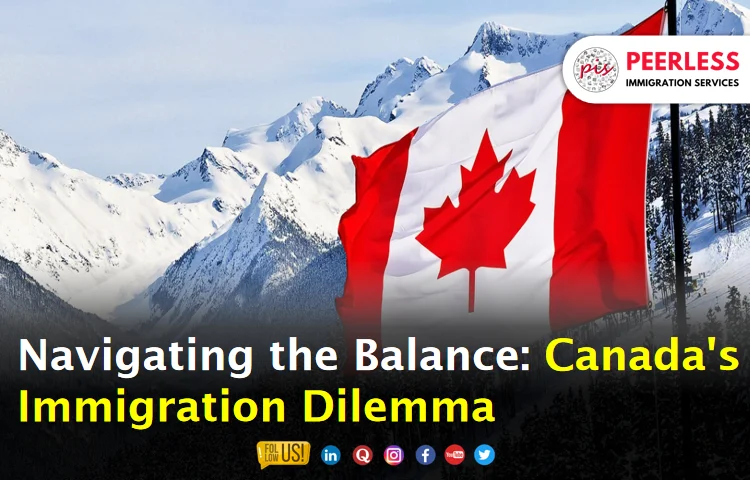
Navigating the Balance: Canada’s Immigration Dilemma
Canada is on the brink of welcoming a substantial influx of immigrants – an estimated 1.45 million people between 2023 and 2025. This surge raises a critical question: what is the optimal amount of immigration for Canada? The answer lies at the intersection of economic goals, demographic challenges, and the delicate balance needed to sustain a flourishing nation.
The Economic Landscape
At the heart of Canada’s immigration strategy is the objective to address labor market shortages, a critical concern given the country’s aging population. Traditionally, a positive correlation existed between economic potential, measured through the economic output gap, and the admission of economic immigrants – both temporary and permanent. However, recent shifts have raised questions about the current balance.
The Desjardins study indicates a growing number of newcomers compared to what the economic output gap justifies. Yet, with a stable unemployment rate and elevated job vacancies, it suggests that Canada, despite its recent surge in immigration efforts, still has many job opportunities. This is particularly evident in the influx of temporary foreign workers addressing specific labour market needs.
Beyond the immediate impact, long-term effects of economic immigration contribute to increased potential GDP growth and GDP per capital. Recent immigrants tend to be more employed, and their younger age brings more potential work hours, driving economic prosperity.
Demographic Dynamics
Central to the immigration discussion is Canada’s aging population, which poses a unique challenge to the national economy. The strain on healthcare services and the subsequent financial burden necessitates a strategic approach. The report delves into the question of what level of immigration can strike the right balance, sustaining a rising standard of living while ensuring the stability of public finances.
To maintain the current ratio of working-age individuals to the aging population through 2040, Canada would need an annual increase of 2.2% in its working-age population. In comparison, the growth in 2022 was 1.6%, indicating a potential gap. If Canada aimed to achieve historical ratios between aging and working-class populations, a more ambitious annual increase of 4.5% would be required.
Challenges on the Horizon
While the economic and demographic arguments make a compelling case for increased immigration, challenges emerge, especially in the housing market. The rising demand, driven by a growing working-age population, has impacted housing affordability. With insufficient new housing projects, affordability concerns persist, potentially dissuading talented workers from choosing Canada as their destination.
The Balancing Act
As Canada grapples with the complexities of immigration, a delicate balance is crucial. The benefits of foreign-born workers contributing to economic growth and demographic balance must be weighed against challenges like housing affordability. The federal government’s role is pivotal in striking the right balance through policy adjustments.
Tightening requirements for non-permanent residents may address housing issues but could raise concerns about fiscal sustainability and population growth. A nuanced, results-driven approach is essential, aligning immigration policies with efforts to enhance housing affordability and overall quality of life for all Canadians.















